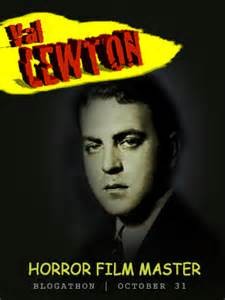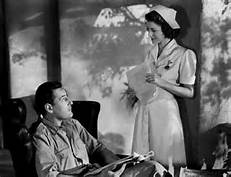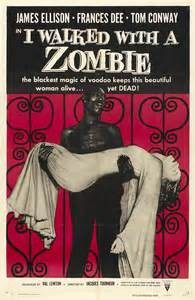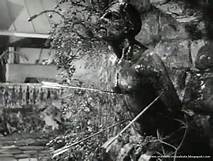 When I slipped out of the Georgia sunlight and into the Rex that Saturday in the fifties, I was not prepared for all the varieties of darkness I was entering. The film I Walked with a Zombie, produced by Val Lewton and directed by Jacques Tournier was over a dozen years old and making the scare matinee rounds. It had not been so successful as Lewton’s The Cat People, in which the techniques of noir mystery meet inexplicable, panther-transforming beings. Lewton and Tourneaur were already notorious for their shadow effects and enigmas, melodrama and legerdemain, but if they and the writers (Siodmak and Ray) were much aware of either the Bronte overtones or cultural/historical implications of their zombie narrative, they didn’t deploy the connections with systematic vigor. As for me, I wouldn’t have known Emily from Bramwell, but I was still very much in my impressionable phase, a little uncomfortable over even the cosmetic gargoyles leering from high on the theater walls. I swallowed my popcorn and RC and chewed (or threw) my Red Devils with a devotion unreminiscent of communion, but I’d heard this movie had a creepy ugly zombie and a beautiful semi-zombie who had been an evil woman in ways the film only dared hint at, so my curiosity drew me into the dark.
When I slipped out of the Georgia sunlight and into the Rex that Saturday in the fifties, I was not prepared for all the varieties of darkness I was entering. The film I Walked with a Zombie, produced by Val Lewton and directed by Jacques Tournier was over a dozen years old and making the scare matinee rounds. It had not been so successful as Lewton’s The Cat People, in which the techniques of noir mystery meet inexplicable, panther-transforming beings. Lewton and Tourneaur were already notorious for their shadow effects and enigmas, melodrama and legerdemain, but if they and the writers (Siodmak and Ray) were much aware of either the Bronte overtones or cultural/historical implications of their zombie narrative, they didn’t deploy the connections with systematic vigor. As for me, I wouldn’t have known Emily from Bramwell, but I was still very much in my impressionable phase, a little uncomfortable over even the cosmetic gargoyles leering from high on the theater walls. I swallowed my popcorn and RC and chewed (or threw) my Red Devils with a devotion unreminiscent of communion, but I’d heard this movie had a creepy ugly zombie and a beautiful semi-zombie who had been an evil woman in ways the film only dared hint at, so my curiosity drew me into the dark.
Light and darkness, prosperity and poverty, goodness and wickedness, different kinds of physical and psychic confinement — all these were bound up in a cadre of characters I was learning to believe should be watched and understood. In short [spoiler alert!] a virtuous Canadian nurse is hired to travel to the mysterious Caribbean island of San Sebastian, where she is to tend the mysteriously ill wife of a sugar cane magnate. Soon the viewer discovers that the family is torn not merely by an unnamed riff (a wife, two brothers, a mysteriously guilty mother, suggestions of incest I didn’t get for years), but the island is even more dramatically divided between luxuriant affluence (white) masquerading as civility, and afflicted poverty (black) perhaps reinforced but certainly excited by nocturnal forces involving drums, ecstatic dancing, chants and spells and trance states. Unfamiliar and threatening as the voodoo followers are, they come across as the good-hearted party, even with their priest (Sabeur) wielding swords.
 Almost as soon as Nurse Betsy arrives on the boat from Antigua, a cart driver tells her that the Hollands (cane magnates now imprisoned by fear in their fortress-like compound) “brought the colored folks to the island, the colored folks and Ti Misery, the old man who lives in the garden.” It happened “long ago . . . the folk chained to bottom of the boat.” Willfully naive, it turns out, Nancy remarks that the imports were certainly brought to “a beautiful place.” “If’n you say,” is the driver’s response.
Almost as soon as Nurse Betsy arrives on the boat from Antigua, a cart driver tells her that the Hollands (cane magnates now imprisoned by fear in their fortress-like compound) “brought the colored folks to the island, the colored folks and Ti Misery, the old man who lives in the garden.” It happened “long ago . . . the folk chained to bottom of the boat.” Willfully naive, it turns out, Nancy remarks that the imports were certainly brought to “a beautiful place.” “If’n you say,” is the driver’s response.
So the oppressed cane workers, deprived of authority, autonomy and so on, have taken to other avenues to power, and these forces thrive in the swamps beyond the cane rows. It’s easy now to see it unfolding, but Nancy/Jane Eyre, when we see her fall for Mr. Holland while caring for his near-catatonic wife, still seems innocent, and the woods are dark and deep but not so lovely.
Ti Misery, by the way, is the prow ornament from the ship that brought the slaves, an image of St. Sebastian, arrows and all. He means more to the cane workers than the cane owners, but the writers miss many great chances with him yet manage a couple of brilliant images of the statue.
But the Euro-folk don’t much rely on their religion, as they have science, modern medicine, and the downtrodden workers have their more mysterious forces and sympathetic magic. No one will quite say what Jessica Holland did that earned her the curse of madness, but insinuations mount up — something about the brother she isn’t married to, but also suggestions of cruelty, perhaps towards workers.
 It never quite parses or unknots, but the voodoo scenes are what I “got,” was chilled by and remembered — controlling people with dolls and needles, a stabbing of the accursed woman without her flinching or shedding blood, the grisly animal parts hanging from trees and bone altars on the ground. The film opposes the members of the two races but isn’t clear in its imagining of voodoo and Christianity as contrary forces, so maybe it’s time for someone to remake this story. . . but no, they’ll never get the poetry right, the atmospherics, the night walks into the cane fields, the zombie servant of Damballah with his huge eyes, the sound of the blown conch through the ground fog.
It never quite parses or unknots, but the voodoo scenes are what I “got,” was chilled by and remembered — controlling people with dolls and needles, a stabbing of the accursed woman without her flinching or shedding blood, the grisly animal parts hanging from trees and bone altars on the ground. The film opposes the members of the two races but isn’t clear in its imagining of voodoo and Christianity as contrary forces, so maybe it’s time for someone to remake this story. . . but no, they’ll never get the poetry right, the atmospherics, the night walks into the cane fields, the zombie servant of Damballah with his huge eyes, the sound of the blown conch through the ground fog.
Near the end of the film, a family member admits of the poor mad wife, “Jessica is not insane. She’s dead.”
So undead, really. And how do you cure that or rescue someone from it. The fact that only one large problem is resolved by the end of the film left me unsettled. It was a little like reading “Young Goodman Brown” before I was ready for it. I wanted to know what was right, what was kind. It was years before I understood that I had also been placed in the midst of a dangerous dynamic. Good or bad, the former slaves were portrayed as dealing in unnatural forces. Bad or good, the former masters (now drunks, quarrelers, liars and abusers) were still the ones with the trappings of culture. It took the Sixties to even set my mind in the right direction on this dilemmas, but by then I wasn’t thinking of zombies so much as night riders and attack dogs, and though I’ve given it a lot of thought over the past decade, I’ve yet to go back and unpack that whole film to see which of its narrative and imagistic roots were insidious, and which of my own . . . .

